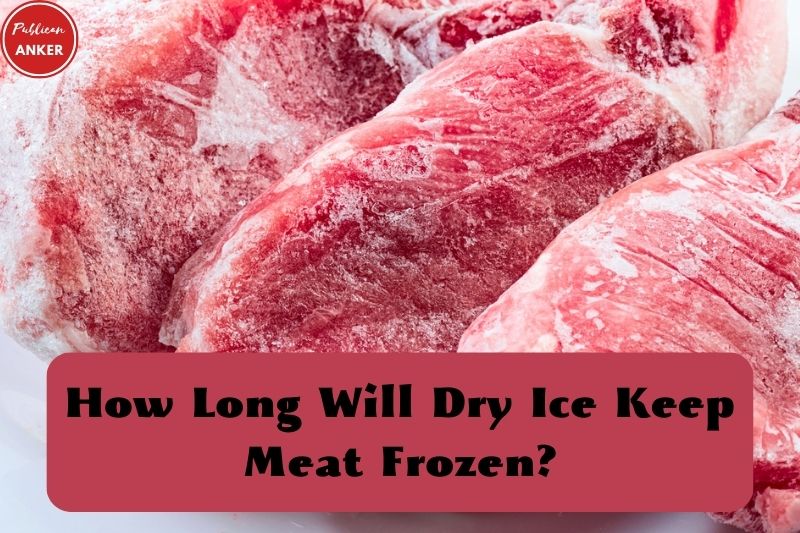While regular ice can keep the meat cool, dry ice is a popular alternative because it can maintain a much lower temperature for a longer period of time.
Dry ice is especially useful for long-distance transportation, camping trips, and other situations where access to a freezer or electricity may be limited.
In this article, PublicanAnker will explore the question “How Long Will Dry Ice Keep Meat Frozen?” and provide some tips for using dry ice to safely transport and store meat.
How Long Does Dry Ice Last?
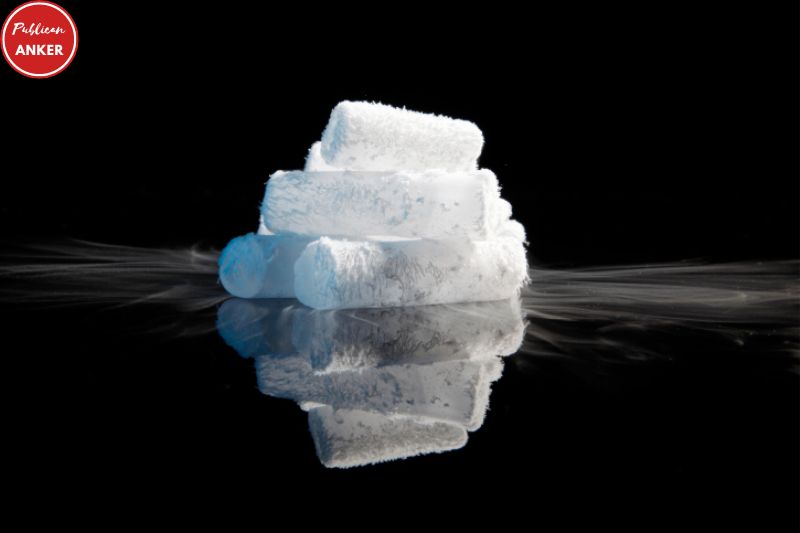
Dry ice, which is solid carbon dioxide, is a popular cooling agent that is commonly used to keep food, medical supplies, and other items cold during transportation or storage.
The longevity of dry ice depends on a few factors, such as the amount of dry ice, the temperature of the environment, and the way it is stored. Generally, dry ice can last for anywhere between 12 to 24 hours in a standard cooler.
However, if the dry ice is stored in an insulated container, such as a Styrofoam box or a cooler with a tight-fitting lid, it can last for up to 3-5 days.
It’s vital to handle dry ice with care and use it in a well-ventilated area, as it can rapidly sublimate and release harmful carbon dioxide gas if not used properly.
How Long Will Dry Ice Keep Meat Frozen?
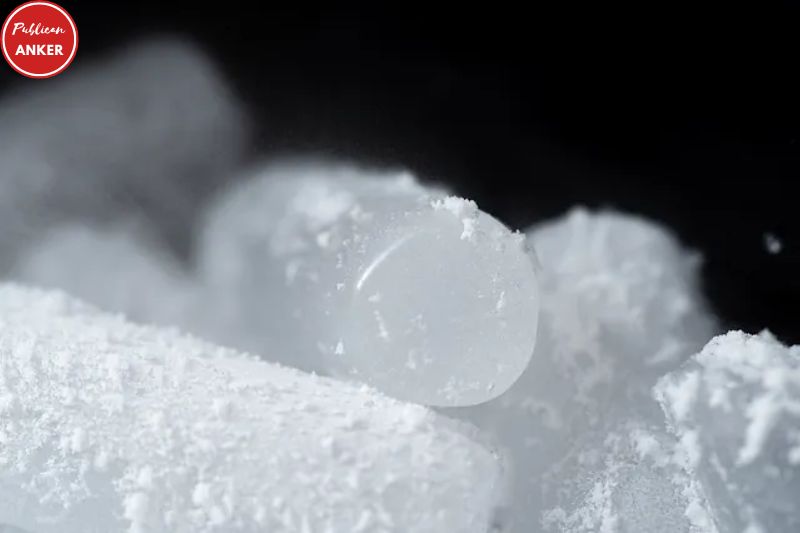
The use of dry ice as a cooling agent for meat storage is a common practice. However, the length of time it can keep meat frozen depends on various factors such as the amount of dry ice used, the temperature of the environment, and the insulation of the container.
Generally, a standard amount of dry ice can keep meat frozen for up to 24 to 36 hours. In contrast, if more dry ice is used or stored in a well-insulated container with a tight-fitting lid, it can preserve the meat’s freshness for up to 3-5 days.
How Long Will It Last In A Freezer?
The length of time meat can last in a freezer depends on several factors, including the type of meat, the packaging, and the temperature of the freezer. Here are some general guidelines for how long different types of meat can last in the freezer:
- Beef, pork, lamb, and veal can last in the freezer for 6-12 months.
- Poultry (chicken, turkey) can last in the freezer for 6-9 months.
- Ground meat can last in the freezer for 3-4 months.
- Sausages and hot dogs can last in the freezer for 1-2 months.
How To Store Meat Frozen In Dry Ice Properly?
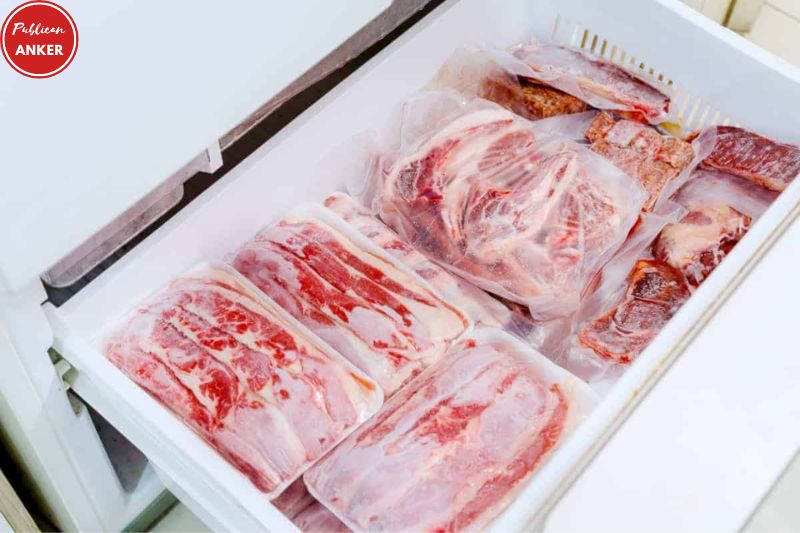
Use An Insulated Cooler
Using an insulated cooler to store meat frozen in dry ice requires careful handling to maintain the quality and safety of the meat is the best way to keep dry ice with meat.
Choose The Right Size Cooler
Choosing the right size cooler to store meat frozen in dry ice is important to ensure the meat stays fresh and safe. Here are some tips to help you choose frozen food cooler for this purpose:
- Determine the amount of meat you need to store: Consider the weight and volume of the meat you need to store in the cooler. This will help you determine the size of the cooler you need.
- Consider the amount of dry ice you need: Dry ice takes up space in the cooler, so you need to factor this in when choosing the right size cooler. Generally, you’ll need about 10-20 pounds of dry ice for every 24 hours of storage time.
- Check the dimensions of the cooler: Make sure the cooler is large enough to accommodate the meat and the dry ice while still providing enough space for air circulation. Consider the length, width, and height of the cooler to ensure it is a good fit.
- Think about the length of storage time: If you need to store the meat for an extended period, such as a week-long camping trip, you’ll need a larger cooler to accommodate more dry ice.
- Consider insulation: A well-insulated cooler will keep the meat frozen for longer periods, so consider the insulation rating of the cooler when making your selection.
Make Sure To Freeze Meat First
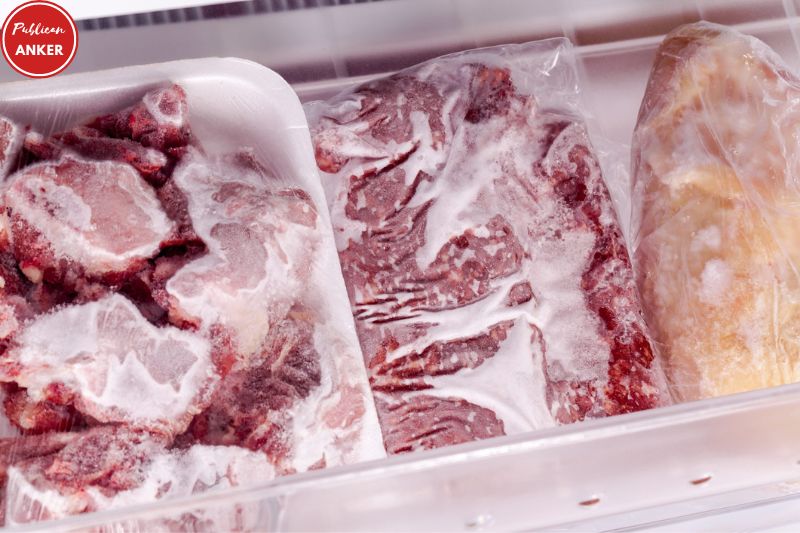
When using dry ice to store meat, it is important to freeze the meat first before placing it in the cooler with the dry ice. Freezing the meat will help to ensure that it stays fresh and maintains its quality during the storage period.
To freeze the meat, place it in a freezer-safe bag or container and ensure it is well-sealed. It’s important to remove as much air as possible from the bag or container to prevent freezer burn. Then, place the bag or container in the freezer for several hours or until the meat is completely frozen.
Once the meat is frozen, you can then transfer it to the insulated cooler with the dry ice.
Make sure to wrap the meat in an additional layer of protection, such as paper or plastic wrap, to prevent direct contact with the dry ice. Then, place the dry ice on top of the meat and add any additional insulation layers before closing the cooler tightly.
Insulate The Outside
Insulating the outside of the cooler can help to keep meat frozen in dry ice properly.
Dry ice has a very low temperature, and it can cause the walls of the cooler to become very cold, leading to condensation or even frost forming on the outside of the cooler. This can reduce the insulation value of the cooler and cause the meat to thaw prematurely.
To insulate the outside of the cooler, you can use a variety of materials such as blankets, towels, or even sleeping bags.
Simply wrap the cooler with the insulation material, making sure to cover all sides of the cooler, including the top and bottom. This will help to keep the cooler insulated and prevent the formation of condensation or frost on the outside of the cooler.
Keep The Meat At The Bottom

When storing meat in a cooler with dry ice, it’s important to keep the meat at the bottom of the cooler. This is because cold air sinks, and by placing the meat at the bottom, you’re ensuring that it stays in the coldest part of the cooler.
To keep the meat at the bottom of the cooler, start by filling the bottom of the cooler with a layer of dry ice. Then, add a layer of insulation, such as cardboard or foam, on top of the dry ice. This will help to create a barrier between the meat and the dry ice to prevent direct contact.
Next, place the frozen meat on top of the insulation layer, making sure to keep it as flat as possible to maximize the surface area in contact with the dry ice.
Once the meat is in place, add additional layers of insulation on top to cover the meat completely.
Make sure to avoid overpacking the cooler, as this can limit air circulation and cause the temperature inside the cooler to rise. Leave some space in the cooler for air to circulate and ensure that the lid is tightly closed to prevent warm air from entering the cooler.
Top Up The Dry Ice
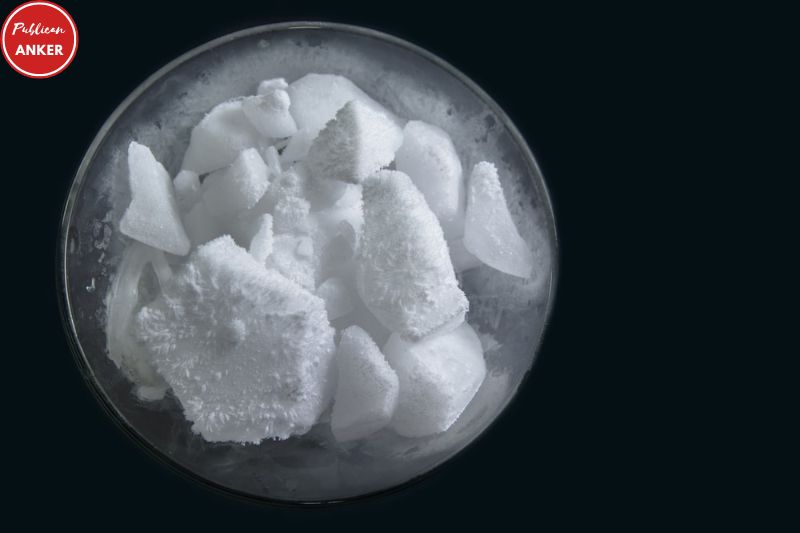
When storing meat in a cooler with dry ice, it’s important to top up the dry ice used for food regularly to ensure that the temperature inside the cooler stays sufficiently low to keep the meat frozen. Here are the steps to top up the dry ice:
- Wear gloves and protective eyewear to handle the dry ice safely.
- Open the lid of the cooler and remove any insulation layers covering the dry ice.
- Use tongs or insulated gloves to add additional dry ice on top of the existing layer. Try to distribute the new dry ice evenly across the surface of the old dry ice.
- Make sure to add enough dry ice to maintain a temperature of at least -18°C (-0.4°F) inside the cooler.
- Replace any insulation layers on top of the new dry ice layer.
- Close the lid of the cooler tightly to prevent warm air from entering.
How Long Does Dry Ice Last in A Freezer?
Dry ice is a solid form of carbon dioxide that is commonly used as a cooling agent for food, beverages, and other perishable items. It is much colder than regular ice and can maintain a temperature of -109.3°F (-78.5°C) or lower.
When stored in a freezer, dry ice keep in freezer several days or even weeks, depending on the quantity and how well it is packaged.
However, it’s important to note that dry ice can be dangerous if not handled properly, as it can cause skin burns and can also produce carbon dioxide gas, which can displace oxygen in a confined space.
Here are some general guidelines for how long dry ice can last in a freezer:
- In a well-insulated freezer, dry ice can last for up to 24-36 hours per 5-10 pounds of dry ice.
- In a standard home freezer, dry ice can last for up to 18-24 hours per 5-10 pounds of dry ice.
- If the dry ice is stored in a cooler or insulated container, it can last for several days or even weeks, depending on the quantity and how well it is packaged.
How Much Dry Ice to Keep Food Frozen?
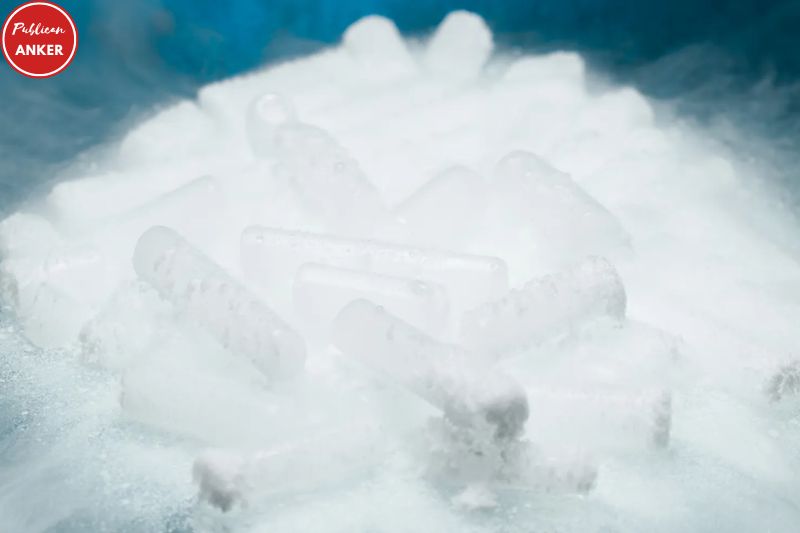
The amount of dry ice required to keep food frozen depends on several factors, such as the size of the cooler, the amount of food being stored, and the ambient temperature.
As a general rule of thumb, keeping food cold with dry ice approximately 5 to 10 pounds of dry ice per 24 hours to keep a small to medium-sized cooler at freezing temperatures.
Here’s a rough guide to help you estimate how much dry ice you’ll need based on the size of your cooler:
- Small cooler (up to 20 quarts): 3 to 5 pounds of dry ice
- Medium cooler (20 to 40 quarts): 5 to 10 pounds of dry ice
- Large cooler (40 to 100 quarts): 10 to 20 pounds of dry ice
- Extra-large cooler (over 100 quarts): 20 to 30 pounds of dry ice or more
Remember to always handle dry ice with care, and avoid overpacking the cooler as this can limit air circulation and cause the temperature inside the cooler to rise. Make sure to check the temperature of the cooler frequently to ensure that the food stays frozen and safe.
Also, keep in mind that dry ice will sublimate (i.e., turn into a gas) over time, so you may need to top up the dry ice periodically to keep the food frozen.
How To Know If It’s Still Good?
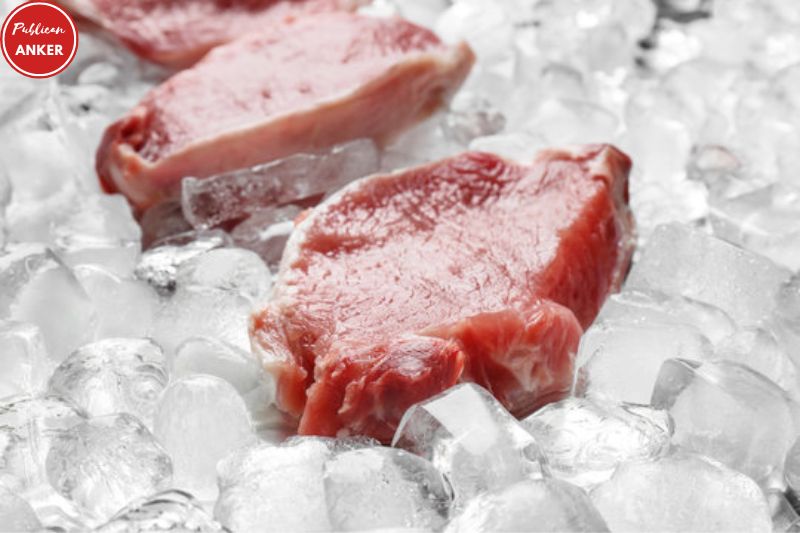
To know if dry ice is still good, there are a few things you can look out for:
- Appearance: Dry ice should be solid and dry. If it appears wet or has a frosty layer on it, it may have absorbed moisture from the air, which can decrease its effectiveness.
- Temperature: Dry ice should be extremely cold (-109.3°F or -78.5°C). If it feels warmer than this, it may have started to sublimate and lose its effectiveness.
- Sound: Dry ice may make a cracking or popping sound as it sublimates. This is normal, but if the sound is particularly loud or continuous, it may indicate that the dry ice is sublimating too quickly.
- Smell: Dry ice should not have any noticeable odor. If it smells unusual or has a chemical-like odor, it may not be safe to use.
- Time: Dry ice has a relatively short shelf life, typically lasting only a few days. If the dry ice has been in storage for an extended period, it may have lost its effectiveness and should be discarded.
In general, it’s best to purchase dry ice as close to the time you plan to use it as possible and to store it in a well-insulated container to minimize sublimation.
Always handle dry ice with care, wearing gloves or using tongs to avoid skin contact, and never store dry ice in an airtight container as it can cause the container to expand and potentially rupture.
What Is The Benefit and Risks Of Using Dry Ice For Meat?
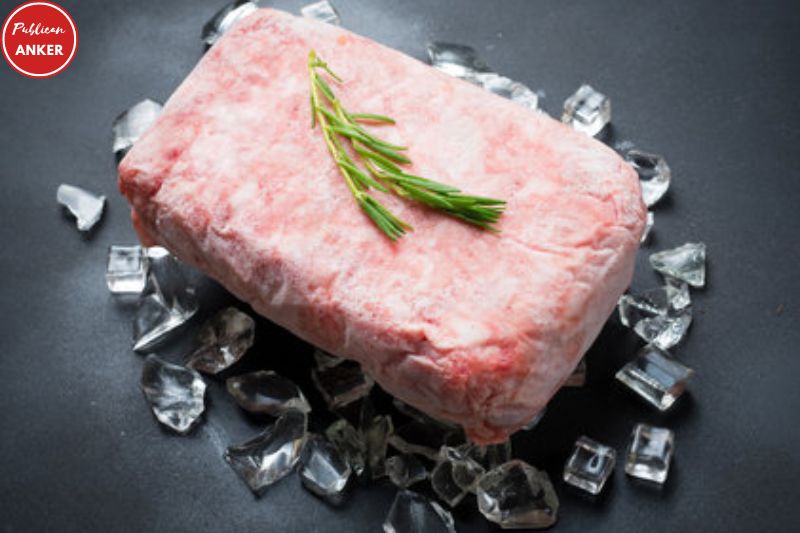
Using dry ice for meat can have both benefits and risks. Here are some of them:
Benefits:
- Preservation: Dry ice can help preserve the quality and freshness of meat during transportation or storage by keeping it at a consistently low temperature. This can prevent spoilage and bacteria growth that can lead to foodborne illness.
- Convenience: Using dry ice can be a convenient way to transport or store meat, especially for long distances or when refrigeration is not readily available.
- Cost-effective: Using dry ice can be a cost-effective way to transport or store meat, as it can be less expensive than other refrigeration methods.
Risks:
- Carbon dioxide exposure: Dry ice can produce carbon dioxide gas, which can be harmful if inhaled in large amounts. It’s important to use dry ice in a well-ventilated area and to avoid breathing in the gas.
- Skin burns: Dry ice can cause skin burns if it comes into contact with bare skin. It’s important to handle dry ice with gloves or other protective clothing.
- Freezer damage: Dry ice can cause damage to freezers if not handled properly, as it can cause the freezer to become too cold and potentially damage the freezer’s insulation or other items stored in it.
- Meat quality: Dry ice can cause the surface of the meat to freeze, which can affect the texture and flavor of the meat. It’s important to use dry ice in a way that minimizes direct contact with the meat.
FAQs about How Long to Keep Meat Frozen
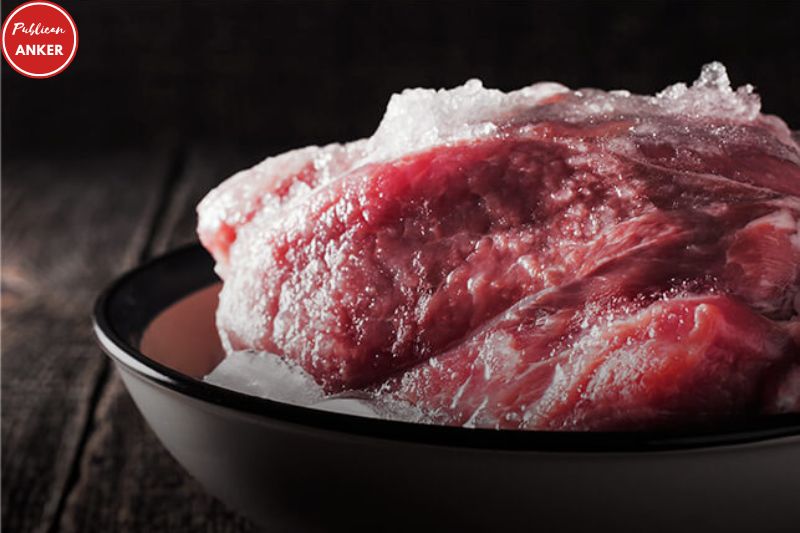
Will dry Ice burn meat?
Yes, Dry ice can potentially burn meat if it comes into direct contact with the meat for an extended period of time.
Can you eat food that has dry ice on it?
No, you should not eat food that has dry ice on it as it can be harmful if ingested. Dry ice can cause skin and tissue damage if it comes into contact with the mouth or digestive system. Remember to remove all dry ice from food before consuming it.
How long can frozen meat last in a cooler?
Frozen meat can last in a cooler for up to 24-48 hours, depending on the quality of the cooler and the temperature of the surrounding environment. Use plenty of ice or freezer packs to keep the meat at a consistently low temperature and to keep the cooler tightly sealed to prevent warm air from entering.
Does dry ice keep things frozen?
Yes, dry ice can keep things frozen as it has a temperature of -109.3°F (-78.5°C) or lower, which is much colder than regular ice. When used properly, dry ice can help maintain a consistently low temperature that can keep food, beverages, and other perishable items frozen for an extended period of time.
How long does dry ice last for shipping?
Shipping meat with dry ice for up to 2-3 days, depending on the quantity of dry ice used and the temperature of the surrounding environment. Package the dry ice properly and use enough of it to maintain a consistently low temperature throughout the shipping process.
How long can Omaha steaks stay in Shipping cooler?
omaha steaks arrived thawed in a shipping cooler for up to 48 hours, depending on the quality of the cooler and the temperature of the surrounding environment. Use plenty of ice or freezer packs to keep the steaks at a consistently low temperature and to keep the cooler tightly sealed to prevent warm air from entering.
How long does it take to keep meat frozen?
The length of time to dry ice to keep food cold depends on the type of meat and the storage conditions. In general, most meats can be kept frozen for up to 6-12 months without significant loss of quality. It’s important to store meat in a freezer that maintains a temperature of 0°F (-18°C) or lower and to package it in a way that minimizes freezer burn and exposure to air.
How long does 1 pound of dry ice last?
One pound of dry ice can last for approximately 18-24 hours, depending on the storage conditions and usage. The rate at which dry ice sublimates (turns from a solid into a gas) depends on factors such as the surrounding temperature, the amount of insulation, and the amount of airflow.
Read more:
- How Long Is Chicken Salad Good For 2023? Can Store It In Refrigerator?
- How Long Does Cooked Steak Last In The Fridge? Top Full Guide 2023
- Best Refrigerator Under 2000: Top Brands Review [2023]
Conclusion
In conclusion, dry ice can be a convenient and effective way to keep meat frozen for extended periods of time. By storing dry ice in -80 freezer or lower, dry ice can help prevent spoilage and maintain the quality of the meat during transportation and storage.
However, keep in mind to handle dry ice with care and to follow all safety guidelines to avoid potential hazards. If you plan on using dry ice to transport or store meat, be sure to package it properly and monitor the temperature regularly to ensure that the meat remains at a safe temperature.
With proper handling and storage, dry ice can be a valuable tool for anyone who needs to keep meat frozen for an extended period of time.
